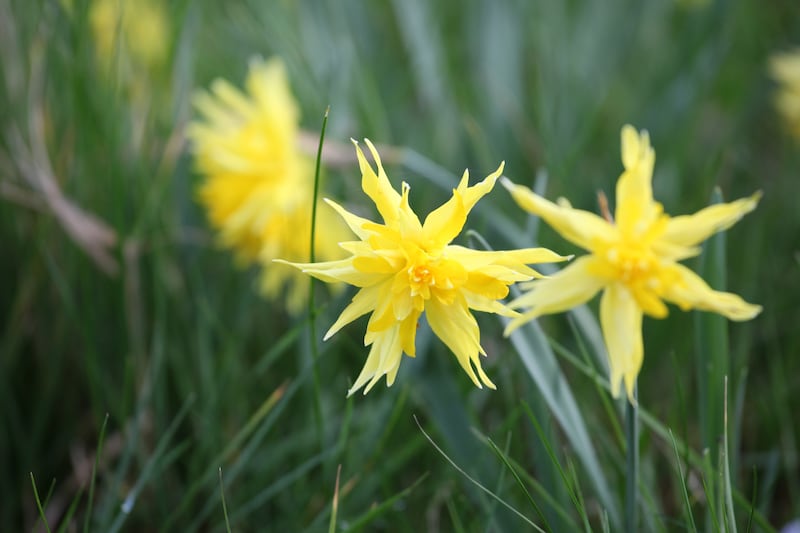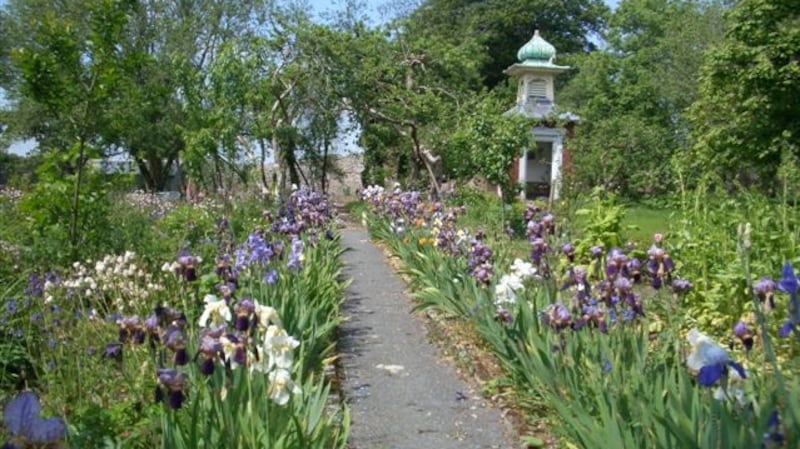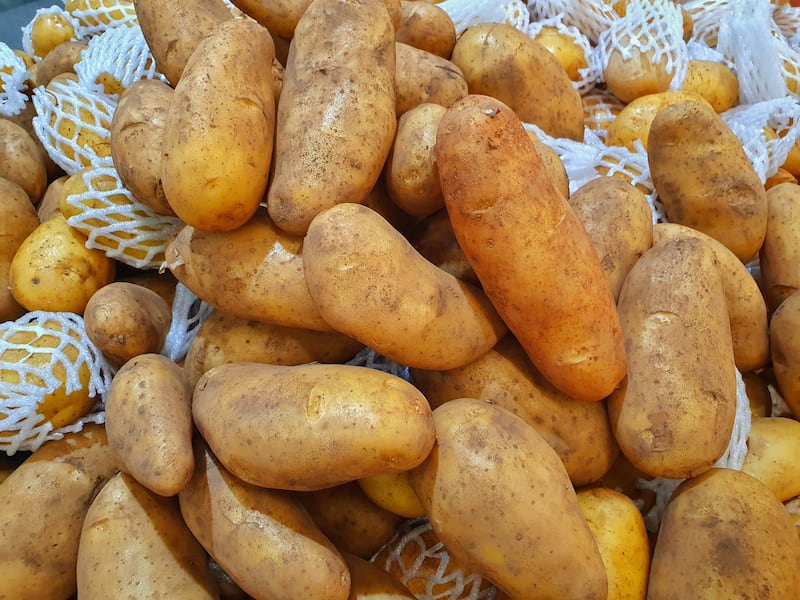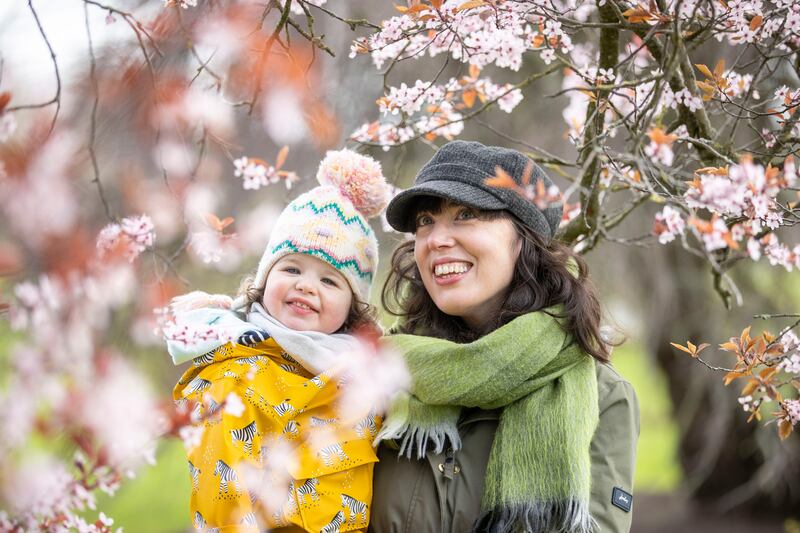From the lone Irish yew tree, first discovered growing in Co Fermanagh in the 18th century, whose countless offspring now flourish in gardens all over the world, to the great Irish gardeners, garden makers, planthunters and plantspeople who have made valuable contributions to the world of horticulture, we have many reasons to be proud of our unique gardening tradition. Here are some suitably horticultural ways to celebrate Ireland’s “40 shades of green”.
Grow an Irish plant

Honour Ireland’s rich heritage of garden plants by growing some of the hundreds of outstanding cultivars that have been bred or selected by Irish gardeners. Many are heirloom varieties in cultivation for generations, from famous old varieties of fruit and vegetables to ornamental trees, shrubs and perennials. Well-known examples include apple varieties such as Malus ‘Irish Peach’, Malus ‘Ard Cairn Russet’ and Malus ‘Kerry Pippin’; the winter-hardy Gortahork cabbage from Donegal; the aforementioned Irish yew, Taxus baccata ‘Fastigiata’; the dainty, starry-flowered heirloom variety of daffodil, Narcissus ‘Rip van Winkle’; the evergreen shrub Mahonia x media ‘Charity’, raised in the famous Slieve Donard nursery in Co Down back in the 1950s; and the dainty spring-flowering woodlander, Anemone nemorosa ‘Robinsoniana’, named after Ireland’s most famous gardener, the plantsman, writer and publisher William Robinson.
Contemporary examples include the golden-flowered Primula ‘June Blake’, which arose in the west Wicklow gardens and nursery of June Blake; Clematis tibetana ‘Lorcan O’Brien’, an elegantly understated late-flowering climber collected in the wild by Seamus O’Brien, author and head gardener of Kilmacurragh Botanic Gardens; Magnolia ‘Adam Clayton’, raised by Michael White, plantsman and former curator of Mount Congreve gardens, and named in honour of the musician, garden-maker and U2 band-member; and the wine-coloured pompon Dahlia ‘John Markham’, named in honour of the late great gardener and champion dahlia and sweet-pea grower of the same name.
Join an association

By becoming a member of one of the organisations established to support and promote Irish horticulture, you can support the sterling work they have done in conserving Irish gardens, and/or Irish heritage plants, as well as biodiversity.
Examples include the Co Clare-based Irish Seed Savers Association, founded in 1996 by Anita Hayes. The association, best known for its work conserving traditional Irish apple varieties, also works with gardeners, growers, and small independent seed producers to conserve and distribute seed of open-pollinated heritage varieties of fruit, vegetables, herbs and grains particularly suited to the Irish climate.
Along with its orchards, its headquarters in Scariff is home to several publicly funded acres of native Irish woodland, while the association runs a wide variety of gardening-related courses. The Irish Garden Plant Society, founded in 1981, is known for its valuable work in researching, recording and conserving Irish garden plants as well as an important recorder of Irish garden history. Working in collaboration with members, volunteers and like-minded garden owners and public bodies, in recent years it has been instrumental in establishing a series of important public collections of Irish garden plants around the country including in the National Botanic Gardens Glasnevin, Blarney Castle in Co Cork, Lismacloskey Rectory Gardens at the Ulster Folk Museum and Pogue’s Entry in Co Antrim.
Last, but certainly not least is the Royal Horticultural Society of Ireland, which describes itself as “a gathering of kindred spirits who share a deep loved for the Earth, a passion for plants and a commitment to sustainable gardening.” The society was founded in 1816. A number of its flagship gardens have been established around the country in recent years, including at Blessington in Co Wicklow and at Bellefield in Co Offaly. The society also runs an excellent online series of talks and lectures via Zoom, as well as garden visits and tours.
Grow some potatoes

Aside from the shamrock, no other plant is so closely associated with Ireland as the humble spud or práta. For centuries a beautifully built lazy bed or trinseáil filled with neat lines of potatoes was the traditional benchmark of excellence, especially if it contained lovely layers of freshly foraged seaweed to help boost growth and disease-resistance. But these days many Irish gardeners grow their potatoes in everything from large tubs and grow-bags to raised beds and conventional drills. St Patrick’s Day traditionally marks the beginning (not the end), of the planting season in Ireland, starting with the faster-growing early varieties followed by the slower-to-crop maincrop varieties in April. Traditional varieties such as ‘Queens’, ‘Home Guard’, ‘Kerr’s Pink’ and ‘Arran Victory’ are still very popular but modern varieties bred for high blight resistance increasingly have the advantage.
Visit the ‘Bots’

The National Botanic Gardens in Glasnevin, Dublin, were founded by the Royal Dublin Society in 1795 and now managed by the Office of Public Works. The gardens are home to an exceptional collection of plants as well as the papers, herbaria and work of some of the country’s most distinguished gardeners, botanists, plant-hunters and botanical artists including Augustine Henry, Robert Lloyd Praeger, Ernest Wilson and Charlotte Wheeler Cuffe. Its restored Palm House and Curvilinear Range of glasshouses, designed by the Dublin-born ironmaster Richard Turner, are some of the other beautiful jewels in its crown while it’s also home to Teagasc’s College of Amenity Horticulture. Since 1996, the Bots have been joined by sister botanic gardens in the grounds of Kilmacurragh House in east Wicklow, famed for its outstanding collection of ericaceous plants. Both are open to the public and host a variety of lectures, classes, workshops and tours throughout the year.
Book a ticket to a gardening festival
Bord Bia’s Bloom takes place over the June bank holiday weekend and has long been a much-loved fixture of the Irish gardening year, as has the Galway Garden Festival, which takes place in early July (claregalwaycastle.com), and the Carlow Garden Festival, which takes place throughout the latter half of July and early August (carlowtourism.com).
Brand new to the scene is the Festival of Gardens & Nature, organised by garden designer Catherine FitzGerald and Minnie Preston, which takes place in Ballintubbert House & Gardens in Co Laois over the weekend of April 20th-21st. Its large and wonderfully eclectic line-up of speakers from Ireland, the UK and US includes perfumiers Sadie Chowen and Cath Kidston, florists and sustainability champions Shane Connolly and Emily Thompson and the Land Gardeners Brigitte Elsworth and Henrietta Courtauld. Kitchen garden experts Kitty Scully, Tom Petherick and Kate Gatacre will also appear, as will author and environmentalist Manchán Magan, actor Dominic West, Irish gardeners and authors Jimi Blake, Seamus O’Brien and TJ Maher, singer and environmentalist Johnny Flynn and the natural swimming pool designer David Pagan Butler, plus many more (festivalofgardensandnature.com).
This week in the garden
First and second-early varieties of potato can be planted outdoors in a sunny sheltered spot into weed-free beds, enriched with some well-rotted manure or home-made garden compost, plus a scattering of slow-release organic fertiliser. Plant the seed tubers in rows to a depth of 12-15cm, and a spacing of 25-30cm, with a minimum of 40-50cm between rows.
Late March is a good time of year to lift and divide large established clumps of snowdrops, while the plants are still “in the green” (still in obvious leaf), before replanting the smaller divisions into the garden or potting them on to give to friends and family. Snowdrops like a fertile, moist but free-draining soil beneath the dappled seasonal shade of deciduous trees and shrubs.
Dates for your diary
Wednesday, March 20th (7.30pm-9pm): ‘Memoir of a Woodland Garden’, a Zoom talk on behalf of RHSI by Michael White, gardener, writer, expert propagator and former curator of Mount Congreve gardens. rhsi.ie
Sunday, March 24th (11am-4pm): RHSI Bellefield gardens, Shinrone, Co Offaly, RHSI Plant Fair 2024, with tours of the garden by head gardener Paul Smyth at noon and 2pm. rhsi.ie
Also Sunday, March 24th (9.30am-1pm): The Grinding House, June Blake’s Garden, Tinode, Blessington, Co Wicklow. ‘Learn how to grow your own cut flowers for free from seed, cuttings and division’, a hands-on plant propagation half-day workshop with Fionnuala Fallon. Booking details @theirishflowerfarmer on Instagram.
- See our new project Common Ground, Evolving Islands: Ireland & Britain
- Sign up for push alerts and have the best news, analysis and comment delivered directly to your phone
- Find The Irish Times on WhatsApp and stay up to date
- Our In The News podcast is now published daily – Find the latest episode here











